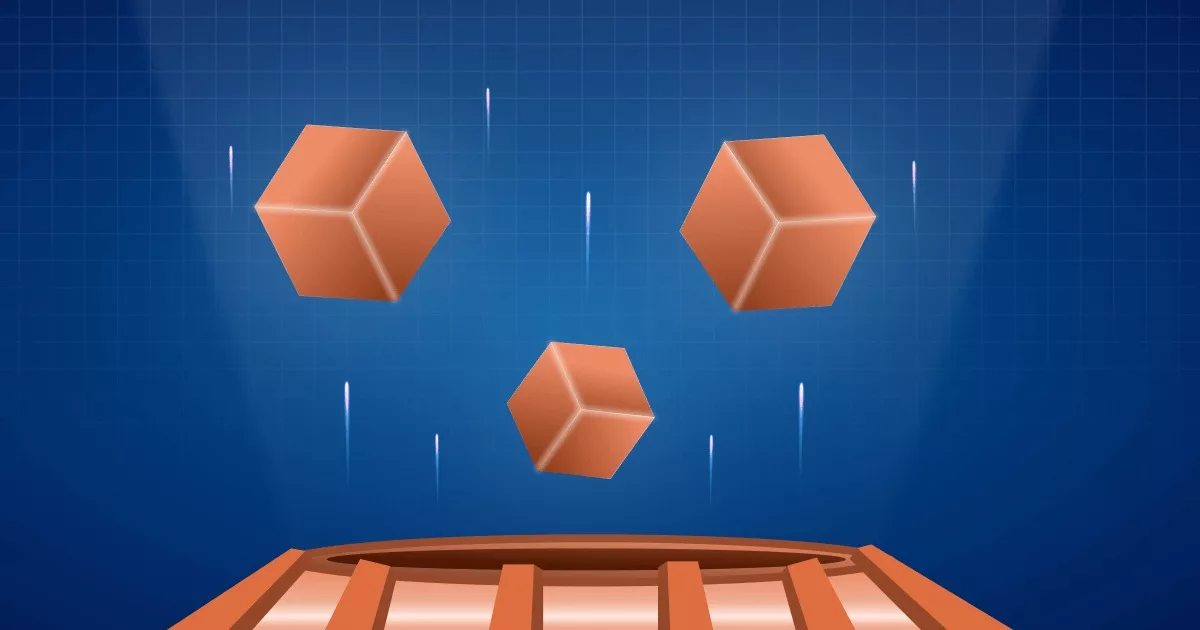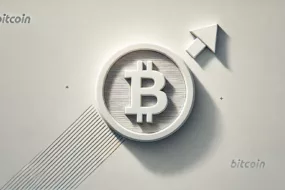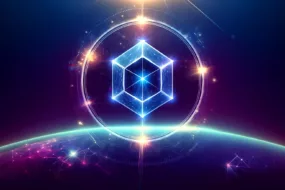
The blockchain technology has revolutionized the way we conduct transactions, exchange information, and interact with each other.
From finance and healthcare to logistics and gaming, the potential applications of blockchain technology are limitless.
In this article, we will explore the top 10 blockchain platforms to consider in 2023. These platforms have been selected based on their features, scalability, security, and overall potential to drive innovation and change in the blockchain ecosystem.
So, if you’re looking to invest in or develop blockchain-based solutions, these platforms are definitely worth your attention.
What are Blockchain Platforms?
Blockchain platforms enable developers to create, deploy, and manage decentralized applications (dApps). Blockchain platforms have become increasingly popular due to their decentralized nature and the ability to create trustless systems that do not require intermediaries or third-party verification.
It provides tools and services that make it easier for developers to build and deploy blockchain-based applications.
Blockchain platforms typically have several components, including a blockchain network, consensus mechanism, and smart contracts. These components work together to enable the creation and execution of dApps.
These platforms offer different features and capabilities, such as scalability, interoperability, and programmability, tailored to different use cases and applications.
They are often used in industries such as finance, supply chain management, and identity verification, among others. These platforms can potentially transform many industries by reducing costs, increasing transparency, and improving security.
Top 10 Blockchain Platforms
1. Ethereum
Ethereum was developed in 2014 by Vitalik Buterin. It’s one of the most popular platforms as it introduced the smart contract functionality.
Features
- Native Token: Ether (ETH)
- Smart contract functionality: It allows for automated transactions and complex business logic to be executed in a secure and auditable manner.
- Decentralized Applications (dApps): Ethereum is currently being utilized to build around 50,000 dApps.
Pros
- Flexibility: The smart contract functionality allows for greater flexibility and customization of business logic.
- Large developer community: Ethereum’s large and active developer community is constantly working on improving the platform.
Cons
- Smart contract bugs: Vulnerability to smart contract bugs and exploits
Use Cases
- Decentralized Finance (DeFi): Ethereum is an ideal platform for DeFi applications such as lending, borrowing, and trading.
- Supply chain management: Ethereum’s transparency and immutability make it suitable for applications requiring secure tracking and verifying goods.
- Healthcare: Ethereum can be used to build healthcare applications that ensure patient data privacy and security.
2. Binance Smart Chain
Binance Smart Chain (BSC) is a blockchain platform developed by the cryptocurrency exchange ‘Binance.’
It was launched in 2020 and is designed to offer faster and cheaper transactions compared to the Ethereum network.
Features
- Native Token: Binance Coin (BNB)
- Interoperability: BSC is compatible with Ethereum Virtual Machine (EVM), allowing developers to port their dApps from Ethereum to BSC easily.
Pros
- Scalability: BSC can handle a higher transaction volume, making it more scalable.
- Low fees: The low transaction fees make it more accessible to users and developers.
Cons
- Scope for centralization: Centralization concerns due to its ownership and control by Binance.
- Security threats: Potential security vulnerabilities due to the use of a smaller set of validators.
Use Cases
- Non-fungible tokens (NFTs): BSC has been used to build NFT marketplaces and applications due to its speed and low transaction fees.
3. Cardano
Cardano is a blockchain platform developed by IOHK, led by Charles Hoskinson.
It was launched in 2017 and is designed to provide a more secure and sustainable platform for decentralized applications.
Features
- Native Token: ADA
- Multi-layer architecture: Cardano has a multi-layer architecture that separates the network’s settlement layer from the computational layer, allowing for greater flexibility and scalability.
Pros
- Sustainability: Cardano’s energy-efficient consensus mechanism (Proof of Stake) makes it a more sustainable platform.
- Scalability: The multi-layer architecture of Cardano allows for greater scalability compared to Ethereum.
- Security: Cardano offers secure platform for building dApps.
Cons
- Slow progress: Slow development and delays in delivering promised features and functionalities.
Use Cases
- Government applications: Cardano’s focus on security and sustainability makes it an attractive platform for building government applications that require high levels of security and transparency.
4. Polkadot
Polkadot is a blockchain platform designed to provide interoperability between different blockchains. It was created by Gavin Wood, co-founder of Ethereum.
Features
- Native Token: DOT
- Multi-chain architecture: Polkadot’s architecture allows for the creation of multiple parallel chains that can communicate with each other.
- Shared security: Polkadot uses a unique consensus mechanism called ‘Nominated Proof of Stake’ (NPoS). It allows token holders to nominate validators to secure the network.
Pros
- Interoperability: Polkadot’s multi-chain architecture enables interoperability between different blockchains. Thus its easier for developers to build dApps that can communicate with each other.
- Scalability: Polkadot’s architecture improve the scalability of the network.
- Security: Polkadot’s shared security model makes it more difficult for attackers to compromise the network.
Cons
- Highly complex: Complexity of the platform can be challenging for developers to navigate.
Use Cases
- Gaming: Polkadot’s multi-chain architecture could be used to build decentralized gaming applications that can communicate with each other and share assets.
5. Corda
Corda is a distributed ledger technology (DLT) that allows for secure and confidential transactions between participants in a network. It was developed by R3.
Features
- Smart contract functionality
- Confidentiality: Corda allows for confidential transactions between participants in a network.
Pros
- Security: Corda’s confidentiality features provide high security and privacy.
- Efficiency: Corda allows faster and more efficient transactions.
Cons
- Learning curve: Corda requires high technical expertise to use it effectively.
- Limited network size: Corda’s network is limited to a few participants, which may not be suitable for larger businesses.
Use Cases
- Healthcare: Corda is suitable for healthcare applications that require secure patient data sharing.
- Supply chain management: Corda can track the movement of goods and ensure their authenticity and quality.
6. Stellar
Stellar was developed in 2014 by Jed McCaleb and Joyce Kim. It has since become famous for payment applications, facilitating cross-border payments and money transfers.
Features
- Native Token: Lumens (XLM)
- Stellar Consensus Protocol (SCP): SCP allows for decentralized validation and consensus of transactions.
Pros
- Low transaction fees: Stellar’s transaction fees are much lower (0.00001 XLM), making it ideal for small transactions.
Cons
- Limited smart contract functionality: Stellar’s smart contract functionality is more limited than other platforms.
- Centralized control: The Stellar Development Foundation controls the network, which may raise concerns for some users.
Use Cases
- Cross-border and micropayments: Stellar is ideal for cross-border payments, remittances, and micropayments due to its low fee.
- Tokenization: Stellar can be used to tokenize assets like real estate or other investments.
7. Tezos
Tezos is a self-amending blockchain platform that uses a liquid proof-of-stake consensus algorithm to validate transactions. It was developed by Arthur and Kathleen Breitman in 2018.
It is designed to provide a more flexible and transparent governance model for blockchain platforms.
Features
- Native Token: Tezos (XTZ)
- Self-amending protocol: Tezos has a unique self-amending protocol that allows upgrades and changes to be made to the network without requiring a hard fork.
- Liquid proof-of-stake: Tezos uses a liquid proof-of-stake consensus algorithm for faster and more efficient block validation.
- Formal verification: Tezos uses formal verification to ensure the correctness of smart contracts and other code on the platform.
Pros
- Flexible governance model: Tezos’ self-amending protocol and liquid PoS consensus algorithm provide a more flexible governance model.
- Large developer community: Tezos’s growing developer community is constantly working on improving the platform.
Cons
- Limited adoption: Tezos is still a relatively new platform and has yet to gain widespread adoption.
Use Cases
- Digital assets: Tezos can be used to create and manage digital assets, such as cryptocurrencies, tokens, and other financial instruments.
8. TRON
TRON aims to provide a platform for creating dApps and sharing digital content.
It was founded by Justin Sun in 2017 and has gained significant attention due to its focus on the entertainment industry.
Features
- Native Token: TRON (TRX)
- High transaction speed: TRON’s blockchain can handle over 2,000 TPS.
- PoS consensus algorithm: TRON uses a PoS consensus algorithm that allows for faster and more efficient block validation.
- Decentralized storage: TRON’s decentralized storage allows for the secure and transparent sharing of digital content.
Pros
- Entertainment industry focus: TRON’s focus on entertainment makes it a valuable tool for content creators and publishers.
- Scalability: TRON’s architecture allows for horizontal scaling.
Cons
- Centralization concerns: TRON’s network is controlled by a group of validators, which may raise concerns for some users.
Use Cases
- Content sharing: TRON’s decentralized storage makes it a valuable platform for sharing and monetizing digital content, such as music, videos, and other media.
- Gaming applications: TRON’s high transaction speed and focus on the entertainment industry make it a valuable platform for building gaming applications.
9. EOSIO
EOSIO is designed to provide high performance, scalability, and flexibility for developers.
It was developed by Block.one and released in 2018.
Features
- Native Token: EOS (EOS).
- Delegated Proof of Stake (DPoS): EOSIO uses a DPoS consensus mechanism that allows for faster and more efficient block validation.
- High transaction speeds: All transactions are completed within 30ms.
- Scalability: EOSIO’s architecture allows for horizontal scaling. It means additional nodes can be added to the network without affecting performance.
Pros
- High performance: EOSIO’s high transaction speeds and scalability make it ideal for applications that require high performance.
- Flexibility: EOSIO’s flexible architecture allows a wide range of applications to be built on the platform.
- Large developer community: EOSIO’s large and active developer community is constantly working on improving the platform.
Cons
- Centralized control: A few block producers control EOSIO’s network, which may raise concerns for some users.
Use Cases
- Identity verification: EOSIO can be used to build secure and private identity verification systems that ensure user privacy and security.
10. Hyperledger Fabric
Hyperledger Fabric is a blockchain platform developed by the Linux Foundation. It is designed explicitly for enterprise-level applications.
Features
- Private channels: Hyperledger Fabric allows users to create private channels for secure communication between select participants.
- Modular architecture: Hyperledger Fabric’s modular architecture allows for greater flexibility and customization of blockchain applications.
Pros
- High level of security: Hyperledger’s permissioned blockchain architecture provides increased security and privacy.
- Flexibility: Hyperledger’s modular architecture makes it easier for businesses to build blockchain applications that meet their needs.
- Scalability: Hyperledger Fabric can handle many transactions per second (TPS), making it suitable for enterprise-level applications.
Cons
- Complexity: Hyperledger Fabric can be complex to set up and maintain.
- Learning curve: Hyperledger Fabric requires technical expertise to use effectively.
Use Cases
- Financial Services: Hyperledger Fabric is suitable for financial services applications such as trade finance and asset management.
- Healthcare: Hyperledger Fabric can be used to build secure and private healthcare applications that ensure patient data privacy and security.
Conclusion
The blockchain industry continues to grow at an unprecedented pace, bringing forth exciting new use cases and possibilities for businesses and individuals alike.
Among the various blockchain platforms available in the market, the top 10 listed here offer unique and diverse features that cater to different needs and preferences.
From the established and widely adopted Ethereum, to the promising new entrants such as Solana, there is no shortage of options for those seeking to explore the world of blockchain.
Whether you are interested in decentralized finance, supply chain management, or other innovative applications, these platforms offer the tools and infrastructure necessary to turn your ideas into reality.
As the blockchain ecosystem continues to evolve and mature, we can expect to see even more exciting developments in the years to come.





